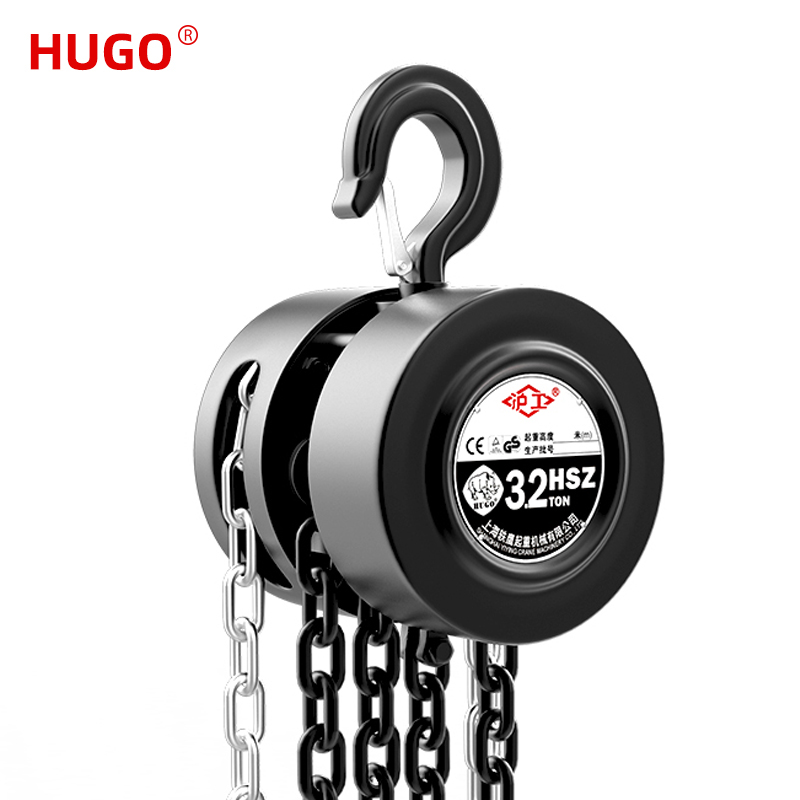Comparing Chain Blocks to Hoists and Cranes: Advantages and Disadvantages
2024-03-04
Introduction:
In industrial and construction settings, the need to lift heavy loads efficiently and safely is a common requirement. Several lifting devices are available to fulfill this need, including chain blocks, hoists, and cranes. Each of these devices offers distinct advantages and disadvantages depending on the specific requirements of the lifting task. In this blog, we'll compare chain blocks to hoists and cranes, examining their respective advantages and disadvantages to help you choose the most suitable lifting device for your needs.
Advantages of Chain Blocks:
1. Portability:
- Chain blocks are lightweight and portable, making them ideal for use in remote locations or areas where access is limited. They can be easily transported and maneuvered without the need for complex installation or setup procedures.
2. Affordability:
- Chain blocks are generally more affordable than hoists or cranes, making them a cost-effective solution for small-scale lifting operations or operations with limited budgets.
3. Versatility:
- Chain blocks are versatile and can be used in various environments and applications, including construction sites, workshops, warehouses, and maintenance tasks. They are suitable for both vertical and horizontal lifting operations.
4. Simple Operation:
- Chain blocks are easy to operate and require minimal training for users. They have a straightforward design with manual controls, making them accessible to operators of all skill levels.
Disadvantages of Chain Blocks:
1. Limited Lifting Capacity:
- Chain blocks have a limited lifting capacity compared to hoists or cranes. They may not be suitable for lifting extremely heavy loads or performing large-scale lifting operations.
2. Manual Operation:
- Chain blocks rely on manual operation by the user, which can be physically demanding and may not be suitable for tasks requiring frequent or continuous lifting.
Advantages of Hoists:
1. Higher Lifting Capacity:
- Hoists typically have a higher lifting capacity than chain blocks, making them suitable for lifting heavier loads and performing large-scale lifting operations.
2. Enhanced Efficiency:
- Hoists offer faster lifting and lowering speeds compared to chain blocks, resulting in increased productivity and reduced downtime.
3. Motorized Operation:
- Hoists are powered by electric or hydraulic motors, eliminating the need for manual operation and reducing operator fatigue.
Disadvantages of Hoists:
1. Higher Cost:
- Hoists are generally more expensive than chain blocks, making them less cost-effective for small-scale lifting operations or operations with limited budgets.
2. Complex Installation:
- Hoists require more complex installation and setup procedures compared to chain blocks, including the installation of electrical or hydraulic systems.
Advantages of Cranes:
1. High Lifting Capacity:
- Cranes have the highest lifting capacity among lifting devices, making them suitable for lifting extremely heavy loads and performing large-scale lifting operations.
2. Long Reach:
- Cranes offer a long reach and can access areas that may be difficult to reach with chain blocks or hoists.
3. Versatility:
- Cranes are versatile and can be equipped with various attachments and accessories to perform different lifting tasks.
Disadvantages of Cranes:
1. High Cost:
- Cranes are the most expensive lifting devices, requiring significant investment in equipment, installation, and maintenance.
2. Space Requirements:
- Cranes require ample space for installation and operation, which may not be feasible in small or confined workspaces.
Conclusion:
Choosing the right lifting device depends on various factors, including lifting capacity, efficiency, cost, space requirements, and specific application requirements. While chain blocks offer portability, affordability, and simplicity, hoists provide higher lifting capacity and efficiency, and cranes offer the highest lifting capacity and versatility. By considering the advantages and disadvantages of each lifting device, you can select the most suitable option to meet your lifting needs and enhance safety and efficiency in your operations.



